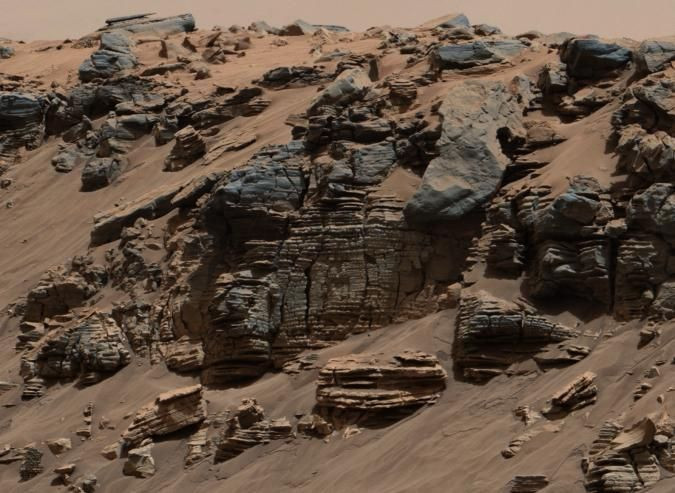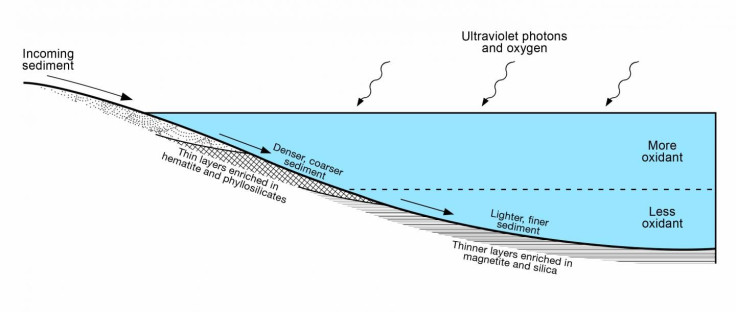Ancient Lake On Mars Was Stratified, Had Oxygen That Varied Across Depths

The ancient lake that existed for a long time inside the Gale Crater on Mars over three billion years ago had stable environmental conditions, and its stratified nature meant those conditions changed with depth. This was revealed by a comprehensive analysis of the data gathered by NASA’s Curiosity rover, which has been on the Martian surface since August 2012.
In a study published Thursday, researchers said that the stratified lake exhibited sharp differences in chemical composition between shallower and deeper layers of water, and that there was more oxygen in some parts of the lake at certain times of its existence, compared to others.
Read: Curiosity Data Extends Window Of Life’s Possible Existence On Mars
“This matters because it affects what minerals are deposited in the sediments, and also because oxygen is important for life. But we have to remember that at the time of Gale Lake, life on our planet had not yet adapted to using oxygen—photosynthesis had not yet been invented. Instead, the oxidation state of certain elements like manganese or iron may have been more important for life, if it ever existed on Mars. These oxidation states would be controlled by the dissolved oxygen content of the water,” Roger Wiens, a planetary scientist at Los Alamos National Laboratory and co-author of the study, explained in a statement Thursday.
Because of a number of varying environments coexisting in the lake, it could have provided the conditions suitable for many different kinds of microbes to have survived. This provides another evidence for the possibility of the existence of life on Mars, and looking for the conditions which allowed that to happen in the distant past is the main aim of the Curiosity mission.

While we still don’t know if life actually existed on the red planet, findings like this are important because they show conditions that could have supported life somewhere other than Earth. Understanding that better could help us get a better idea of how life began on our home planet 4.2 billion years ago. There are also some theories that say life on Earth actually originated on Mars, and made its way here later.
Curiosity has now spent over 1,700 Martian days (one Martian day, or sol, is 24 hours and 39 minutes) on the surface of our neighboring planet, and has traveled over 10 miles during its exploration of the Gale Crater. The crater itself, about 100 miles across, is about 3.5 to 3.8 billion years old and was formed due to the impact of a meteor in Mars’ early history.
Research published earlier in the week described silica-rich halos, also discovered by Curiosity, in Gale Crater, extending the window during which life may have existed on Mars.
The Thursday study, titled “Redox stratification of an ancient lake in Gale crater, Mars,” was published in the journal Science.
© Copyright IBTimes 2024. All rights reserved.




















